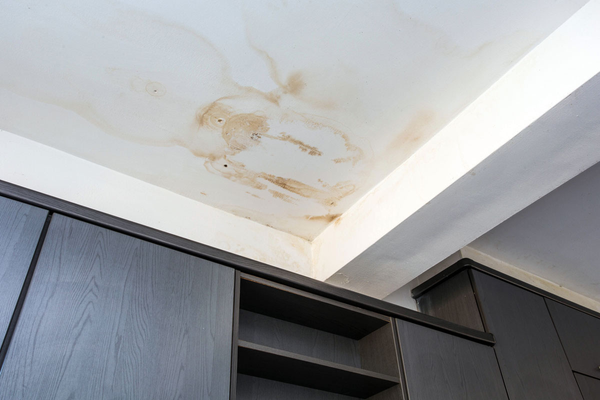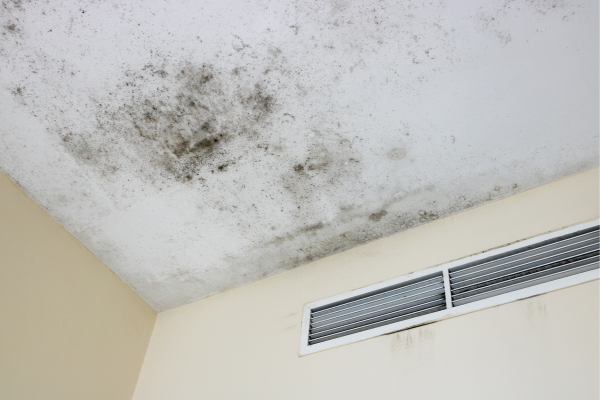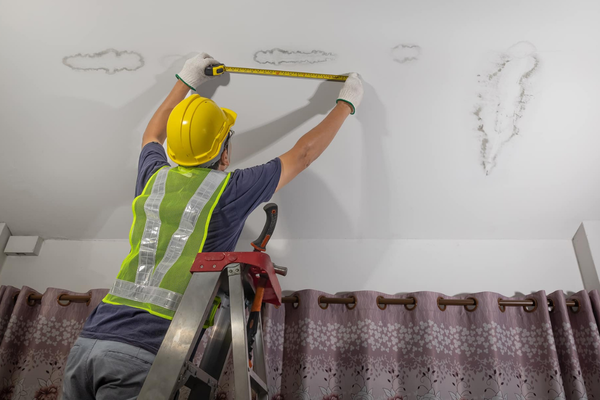Water damage is highly ranked as one of the most destructive issues a homeowner can experience. It can result in immense structural damage, promote hazardous mold growth, and substantially lower your property’s value. Minor leaks that are unmanaged are often the cause of very expensive and time-consuming repairs. Early recognition is important in order to avoid severe and costly damages. It will enable you to identify different forms of water damage, what to look out for, and take immediate action to safeguard your home.
Homeowners are highly likely to experience water damage at some point in their lives. According to the Insurance Information Institute, water damage and freezing accounted for an average of almost 23% of claims between 2017 and 2021.
Understanding Water Damage
Water damage is the destructive process that occurs when excess water or moisture invades the structural elements of your residence over time. This could be due to a number of causes-leakage of the pipes, roof damage, basement flooding, or other forms of structural weakness, and even burst plumbing lines. The first step in preventing further damage and protecting your property is to understand how water damage manifests itself.
In general, water damage is grouped into three categories, based on the level of risk and health hazard involved:
- Clean Water: This type of water originates from a clean, uncontaminated source such as a broken water line or leaky faucet. It presents no immediate health risk but, if left unattended, can quickly degenerate within a very short period into more hazardous forms.
- Gray Water: It is described as partially contaminated water and can be obtained from sources such as washing machines or even a dishwasher. This water contains some sort of chemicals, soap, or food remains that make it more harmful when compared with clean water. It requires proper cleaning in order to avoid health problems.
- Black Water: This is usually the most hazardous type of water damage, and this occurs due to sewage backups or flooding from rivers and streams. It contains harmful bacteria, viruses, and other toxic contaminants that may be the root of severe health hazards. Black water can only be cleaned up by a professional remediation service.
Knowing these types will help you in determining how serious the damage is and how to effectively clean up and restore it.
Common Signs of What Water Damage Looks Like

Visible Moisture
Moisture can be one of the first and most apparent signs of water damage. You may see damp areas on walls, ceilings, or floors-even with no apparent source of water nearby. This visual appearance of moisture is usually the result of an intrusion or leak that is obscured from view.
Stains and Discoloration
Yellow, brown, or copper-colored stains on your walls and ceilings are surefire signs of water damage. Generally speaking, such discoloration means that water has seeped into and collected within the structural frameworks of your house. Besides discoloration, peeling, bubbling, and blistering of paints or wallpapers are another possible indication of water damage. This mainly occurs when moisture tampers with the glue effect used between the wall and the coverings. Discoloration on walls, ceilings, and even the floors is another obvious indication of moisture that has been present for some time.
Mold and Mildew Growth
Mold and mildew are obviously found in high-moisture areas. The fungi will appear in the form of black, green, or white spots, which are most of the time accompanied by a very distinct, musty odor. They are not only unsightly; they can be injurious to health due to possible respiratory problems and allergies. Mold growth is common, which usually points out a continuous moisture problem-the water damage has been there for quite a time and really needs urgent attention.
According to mold prevalence rates, approximately 50% of all homes in the United States have some form of mold growth. This alarming statistic highlights the need for homeowners to be vigilant in preventing and addressing mold issues.
Blistering or Bubbling of Paint
These areas of water damage can cause the paint or wallpaper to blister, peel, or bubble. The excess moisture gets behind the surface, loosening the bond between the paint and the wall. These are signs that major water issues can be hidden underneath.
Warped or Swollen Walls, Floors, and Ceilings
Excessive moisture will definitely wreak havoc on the materials of walls, floors, and ceilings. Wood structures and drywall may buckle or swell when they receive too much moisture. In worst cases, such surfaces can even show a spongy or soft texture to the touch, pointing to heavy water saturation. Sagging walls or ceilings due to warping are most likely to compromise the structural integrity of your home.
Musty Smells
A persistent musty or damp odor in your home generally points to water damage somewhere. Even though you might not be able to view anything, that odor means mold or mildew has grown and moisture problems have not been resolved. When you smell something musty, you need to investigate further; it could mean a more serious problem with water damage.
Cracks in Walls or Foundation
Prolonged exposure to water will weaken the structure of a building, and this may lead to wall, ceiling, or even foundation cracks developing. This usually occurs when the seepage of water takes place, along with further expansion and contraction of materials resulting in weakened structure. These problems require urgent solution in order to put a halt to further deterioration and costly repairs.
Damaged or Rusted Metal
This can be in the form of rusted metal fixtures, burst pipes, or appliances. Rust along any of these lines may mean a long enough duration of moisture to suggest there is an underlying problem, such as a slow leak or high humidity level.
Spongy or Soft Walls and Ceilings
If water has impregnated walls or ceilings, the materials may feel soft and spongy or even collapse with light pressure. This is a serious water damage condition that, in most cases, requires professional intervention to avoid further deterioration of the construction features and to make certain they are safe.
Rust
With time, any metal surfaces exposed to moisture will rust, whether it be nails, screws, or other hardware in drywall, compromising the integrity of your home’s framework. Rust can serve as a visible warning sign to indicate that moisture is present and needs attention to prevent more damage.
Water Puddles and Dripping Water
Any small puddle or dripping water in sinks or even down in the basement may be indicative of a big problem. These tiny issues can very easily snowball into huge problems and destruction when not taken care of immediately. Always try to find the source of pooling or leaking water, as it just might show a hidden leak or plumbing issue.
Hidden Signs of Water Damage: What to Look For & What it Looks Like
Not all signs of water damage are quite as straightforward, and the hidden kind can be even more dangerous due to the fact that it often goes undetected until it’s too late. There are subtle clues, though, to which a homeowner should be privy. These signs may indicate that a water issue is hiding behind walls, ceilings, or flooring.
1. Unexplained Increases in Water Bills
An unexpected and unexplained rise in water consumption may indicate a concealed leak. Even without visible signs of damage, a constant leak or ruptured pipe behind the walls can quietly waste water and cause further structural damage. Monitoring your water usage helps in early detection of such issues.
2. Hidden Mold and Structural Issues

Mold and structural damage usually hide behind appliances, under sinks, and in areas non-professionals can’t easily access, like crawl spaces. Even while your walls and floors appear normal, these might be silently suffering from hazardous mold and structural damage resulting from relentless water leakage. Regular checks in these spaces will help you identify problems before they get worse.
3. Sound of Running Water
It is also a warning when the croak of running or trickling water occurs when all the faucets and appliances are turned off, hidden away from your line of sight inside your walls or under your floorboards. You are supposed to hear a sound of running water when the apparent sources are not easily located; this might just be a signal you’re looking for, calling on the need for immediate investigation to arrest the damage.
How to Fix Water Damage
When you find signs of water damage, act fast to avoid significant damage and costly restoration.
- Analyze the Situation: Find out where the water is coming from and how much damage is done. If safe to do so, try to stop the flow of water. Find your shut off valve in your home and turn the water off.
- Document the Damage: Take photos and videos of the places that got damaged. This will be helpful if you want to submit a claim for restoration.
- Temporary Repair: In cases of minor water leakage or damage, you can use temporary repairs like seals and patching materials to temporarily stop the water from coming inside. These solutions are, however temporary.
- Contact a Professional: The best way to handle this is by getting in touch with professional restoration water damage services, and Tri-State Ready Restoration just happens to be one. They will be proficient enough with the equipment, tools, and machinery required to dry out your place so that no moisture remains, and so all the issues are seen before water damage could be a foreteller of mold growth.
- Prevent Future Problems: After repair of the damage, you may consider sealing any cracks in walls and ceilings, ensuring good drainage in your house, and maintaining regular plumbing checks to prevent the occurrence of water damage again.
By acting promptly and involving professionals, you will be able to ensure that your home will be restored safely and effectively, so that your investment and health will be secured.
Why Choose Tri-State Ready Restoration?
When disaster strikes and water damage puts your home in jeopardy, Tri-State Ready Restoration stands ready to provide expert, reliable service. Here is why you can rely on us:
- Assessment by Experts and Cleaning: Our professional team will quickly assess the extent of the damage and prepare an appropriate plan for cleaning and restoration. Advanced machinery and methods will be used to get rid of all water and moisture, thereby preventing mold growth and all other problems.
- Comprehensive Restoration Services: From water extraction through structural repairs, we take responsibility for every step of the entire restoration process to comfortably return your home to its pre-damaged condition efficiently and effectively.
- Emergency Response: Water damage doesn’t wait, and neither do we. Our emergency services are available 24/7 to respond quickly and minimize damage. We understand the urgency of water-related issues and can be depended on for quick, reliable service.
- Experience and Reliability: Tri-State Ready Restoration has been in the water damage restoration business for many years, providing a reputation of quality with every job. Our professionals will provide the highest level of quality work while treating our customers with respect and care.
Trust the professionals and experts of Tri-State Ready Restoration to address water damage discreetly and with care so that your home is kept safe and secure.
Wrapping Up What Water Damage Looks Like
Water damage can badly affect your home if it is not addressed in time. Learn to spot the signs, from visible moisture to that musty smell, and taking corrective measures will save your property from extensive damages. Don’t wait for tomorrow; take immediate action today once you notice any of these signs of water damage.
For professional New Jersey water damage restoration services, consider Tri-State Ready Restoration. Our experienced team is dedicated to providing fast, reliable, and comprehensive solutions to restore your home to its best condition. Let us assist you today and bring peace of mind with experts by your side.

